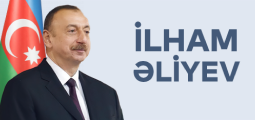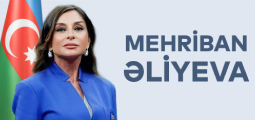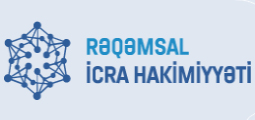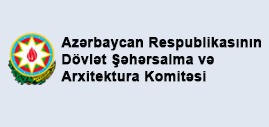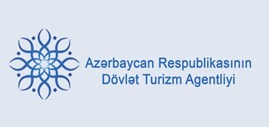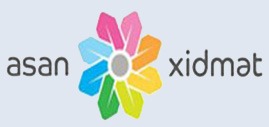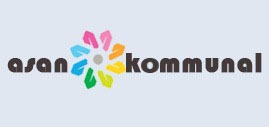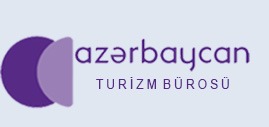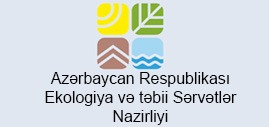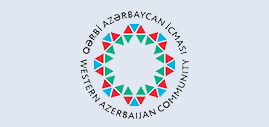Azerbaijan
Area
The territory of the Republic of Azerbaijan is 86.6 thousand km2 (11.5% forests, 1.6% water basins, 50.0% cultivated lands, including 27.0% pastures, 36.9% other lands).
Geographically, Azerbaijan is located in the South Caucasus region of Eurasia, straddling Western Asia and Eastern Europe. It lies between latitudes 38° and 42° N, and longitudes 44° and 51° E.
It is bounded by the Caspian Sea to the east, Russia to the north, Georgia to the northwest, Armenia to the west and Iran to the south. The exclave of Nakhchivan is bounded by Armenia to the north and east, Iran to the south and west, and has an 11 km (6.8 mi) long border with Turkey in the northwest.
The coastline stretches for 800 km (497 mi), and the length of the widest area of the Azerbaijani section of the Caspian Sea is 456 km (283 mi). The territory of Azerbaijan extends 400 km (249 mi) from north to south, and 500 km (311 mi) from west to east..
|
Large lakes |
Km2 |
Large islands |
Km2 |
Large Lakes |
km |
|
Sarisu |
67.0 |
Pirallahı |
14.4 |
Kur |
1515 |
|
Aghgol |
56.2 |
Chilov |
11.5 |
Araz |
1072 |
|
Agzibirchala |
37.0 |
Khere-Zira |
3.5 |
Alazan (Qanikh) |
413 |
|
Mehman |
35.0 |
Boyuk Zira |
1.4 |
İori (Qanikh) |
389 |
|
Boyukshor |
9.2 |
|
|
Samur |
216 |
|
Hajigabul |
8.4 |
|
|
Tartar |
200 |
The largest lake in the world - the Caspian Sea, with an area of 400,000 km2, the deepest point - 1025 m.
The highest peak of Azerbaijan is Mount Bazardüzü - 4466 m.
Administrative divisions
Azerbaijan is divided into 10 economic regions; 66 districts and 77 cities of which 12 are under the direct authority of the republic. Moreover, Azerbaijan includes the Autonomous Republic of Nakhchivan. The President of Azerbaijan appoints the governors of these units, while the government of Nakhchivan is elected and approved by the parliament of Nakhchivan Autonomous Republic.
|
Note: The population is mainly given as of January 1, 2009. |
|||
|
|
Area (km2 ) |
Population |
|
|
Baku city |
2,13 |
2039,7 |
Baku is the capital and largest city of Azerbaijan. oday, Baku is divided into 12 rayonlar (sub-rayons) (administrative districts) and 5 settlements of city type: Binagadi raion, Garadagh raion. Khatai raion, Khazar raion, Narimanov raion, Nasimi raion, Nizami raion Pirallahy raion, Sabail raion, Sabunchu raion, Surakhany raion, Yasamal raion. It is the industrial, scientific and cultural center of Azerbaijan. The economy is based on the oil and gas industry, mechanical engineering, light and food industries, construction, communications, transport, etc. |
|
Absheron district |
1,36 |
189,4 |
The basis of the economy is the food industry, suburban, mainly irrigated agriculture (vegetable growing, viticulture, etc.) and dairy and meat livestock. In our country, southern fruits (pistachios, almonds, olives, etc.) and very valuable saffron are grown mainly in the Absheron region. Oil and gas production is widespread in the area. |
|
Aghdam district |
1,15 |
174,6 |
The basis of the economy is light and food industry, as well as agriculture - cotton, grain, viticulture, cocoons, livestock. On July 23, 1993, the center of the region and most of its territory were occupied by Armenians. |
|
Agdash district |
1,05 |
98,3 |
Its economy is based on agriculture, light and food industries. Cotton growing plays a key role. |
|
Aghajbadi district |
1,76 |
121,3 |
Its economy is based on agriculture, light and food industries. It is one of the main cotton-growing regions of the republic. |
|
Aghstafa district |
1,50 |
80,0 |
Its economy is based on agriculture, especially viticulture, grain growing and animal husbandry. |
|
Aghsu district |
1,02 |
70,0 |
The basis of the economy is diversified agriculture. Industrial enterprises mainly process agricultural products. Cotton growing, viticulture, animal husbandry developed. |
|
Astara district |
0,62 |
95,9 |
The basis of the economy is the food industry (mainly dry |
|
|
|
|
velvet tea production) and agricultural production (tea, grain, citrus fruits, vegetables, etc.). |
|
Balaken district |
0,92 |
89,5 |
The basis of the economy is diversified agriculture. Grain growing, especially grain corn, tobacco, fruit growing (mainly nuts) and dairy and meat cattle breeding have developed. |
|
Beylegan distirct |
1,13 |
86,3 |
Its economy is based on cotton, grain, viticulture and animal husbandry. |
|
Berde district |
0,96 |
142,1 |
Its economy is based on agriculture, mainly cotton, grain, viticulture and animal husbandry. |
|
Bilasuvar district |
1,40 |
87,3 |
The basis of the economy is agriculture. Mainly cotton growing, grain growing and cattle breeding are developed. |
|
Jabrayil district |
1,05 |
70,3 |
Its economy was based on animal husbandry, viticulture and cocoons. It was occupied by Armenians on August 23, 1993. |
|
Jalilabad district |
1,44 |
191,5 |
The basis of the economy is grain growing. Viticulture, animal husbandry, fruit and vegetable growing are also important sectors of the economy. |
|
Dashkasan district |
1,05 |
32,8 |
They are mainly engaged in animal husbandry, grain growing and potato growing in the region. There is an ore refining plant. |
|
Devechi district |
1,09 |
51,2 |
Its economy consists of agricultural sectors: grain, viticulture, vegetable growing and animal husbandry. |
|
Fuzuli district |
1,39 |
111,9 |
Its economy was based on agriculture, vegetables, grain and livestock. There were agricultural processing enterprises in the district. On August 23, 1993, most of its territory was occupied by Armenians. |
|
Gadabay district |
1,29 |
93,6 |
The region specializes in agriculture, mainly potato growing, animal husbandry, grain growing and horticulture. |
|
Goranboy district |
1,79 |
95,4 |
Its economy is based on agriculture, especially grain and cotton |
|
Ganja city |
0,11 |
313,0 |
It is the second most populous city in the country after Baku and Sumgayit in terms of industrial |
|
|
|
|
production. Most of the total industrial output falls on non-ferrous metallurgy, light and food industries, electronics and instrumentation. |
|
Goychay district |
0,74 |
108,8 |
Its economy is based on agriculture, cotton, grain, viticulture, animal husbandry, cocoons and fruit growing. |
|
Goygol district |
1,03 |
57,0 |
The basis of its economy is agriculture, especially livestock, viticulture, crop production and vegetable growing. |
|
Hajigabul district |
1,64 |
65,5 |
Its economy is based on agriculture, including livestock, grain, cotton, melons and vegetables. |
|
Khankendi city |
1,05 |
55,0 |
It was a developed industrial center of the republic. The light and food industries were developed. There were electrical engineering, car repair and asphalt- concrete plants, a furniture factory, construction materials, industrial, manufacturing and educational production complexes. It is currently occupied by Armenians. |
|
Khachmaz district |
1,05 |
158,8 |
It is one of the largest vegetable, grain and fruit growing and livestock regions of the republic. Poultry and fishing are also developed. Canning, grape processing plants, etc. operates. |
|
Khizi district |
1,9 |
14,7 |
Its economy is based on livestock and agriculture |
|
Khojavend district |
1,46 |
41,5 |
Viticulture, grain growing and animal husbandry played an important role in the economy. It was occupied by Armenians on October 2, 1992. |
|
Khojaly district |
0,97 |
25,8 |
The basis of the region's agriculture was grain growing, viticulture, vegetable growing and animal husbandry. There was a building materials factory, a winery, a soft drink factory, large pig and livestock complexes, textile and sewing factories in the district. It was occupied by Armenians on February 26, 1992. |
|
Imishli district |
1,82 |
113,8 |
Cotton, livestock and grain farming play an important role in the economy. |
|
Ismayilli district |
2,06 |
79,1 |
Grain-growing, animal husbandry, viticulture, fruit- growing, tobacco-growing, etc. are practiced in the region. areas developed. There are carpet factories, |
|
|
|
|
wineries, juice factories, meat and dairy processing plants, etc. in the area. There are enterprises. |
|
Kalbajar district |
3,05 |
77,6 |
Agriculture and animal husbandry played a key role in the economy. It was occupied by Armenians on April 2, 1993. |
|
Kurdamir district |
1,63 |
103,8 |
The basis of the economy is crop production, especially cotton and grain. Viticulture and cocoons were also developed |
|
Gakh district |
1,49 |
53,1 |
Its economy is based on crop production, especially tobacco and grain, as well as livestock. |
|
Gazakh district |
0,70 |
88,9 |
Its economy is based on agriculture, especially grain, viticulture, melons and gourds and livestock. There are also agricultural processing enterprises. |
|
Gabala district |
1,55 |
93,8 |
Its economy is based on livestock, grain, tobacco, viticulture and cocoons. There are agricultural processing enterprises. |
|
Gobustan district |
1,37 |
40,0 |
Its economy is based on grain, livestock and viticulture. |
|
Guba district |
2,58 |
151,9 |
The republic is an important fruit-growing region. Other major agricultural sectors are grain and livestock. Livestock, fruit and vegetable products are processed in industrial enterprises. |
|
Gubadli district |
1,37 |
37,4 |
Its economy was mainly specialized in grain, viticulture, tobacco, cocoons, and livestock. There were agricultural processing enterprises. It was occupied by Armenians on August 31, 1993. |
|
Gusar district |
1,54 |
87,5 |
The basis of the economy is agriculture. Sheep-breeding, grain-growing, fruit-growing and melon-growing are widely developed. There are enterprises for processing agricultural products and carpet weaving. |
|
Lachin district |
1,84 |
72,0 |
Livestock played a key role in the economy. Grain and fruit growing were widely developed. It was occupied by Armenians on May 18, 1992. |
|
Lankaran district |
1,54 |
205,3 |
Mainly operates food industry. Tea factory, vegetable, fish canneries, etc. available. The basis of the agrarian unit is vegetable growing, tea growing, viticulture, beekeeping, cocooning and animal |
|
|
|
|
husbandry. |
|
Lerik district |
1,08 |
74,3 |
Its economy is based on tea, vegetables, potatoes, tobacco and grain. |
|
Masalli district |
1,79 |
196,2 |
Its economy is based on tea, vegetables, beekeeping, viticulture and grain growing. There are agricultural processing enterprises. |
|
Mingachevir city |
0,13 |
96,1 |
Its industry is based on energy, engineering, chemical, light, food and construction industries. |
|
The city of Naftalan |
0,3 |
7,7 |
It is a resort town. There are 6 sanatoriums. |
|
Neftchala district |
1,45 |
79,4 |
It is an industrial and agricultural region. There are petrochemical, fish and cotton processing and other enterprises. The leading sectors in agriculture are cotton, vegetables, melons and fruits. |
|
Oguz district |
1,22 |
40,2 |
Its economy is based on agriculture, including livestock, crop production, grain, tobacco and vegetables. |
|
Saatli district |
1,18 |
92,3 |
Its economy is based on cotton, grain, melons, vegetables, dry subtropical fruit and livestock. There are agricultural processing enterprises. |
|
Sabirabad district |
1,47 |
151,1 |
It is the largest cotton, livestock, melon and vegetable growing region of the republic. There are cotton gins and other processing plants. |
|
Salyan district |
1,79 |
121,4 |
The basis of agriculture is cotton, grain, vegetables and livestock. There are agricultural processing enterprises. Dry subtropical fruit and vegetable growing are also important areas. Oil and gas production area, plastic processing, cotton gins, etc. available. |
|
Samukh district |
1,45 |
53,4 |
Its economy is based on viticulture, animal husbandry, grain growing, vegetable growing and fruit growing. |
|
Siyazan district |
0,70 |
37,6 |
The economy is based on the oil industry. In agriculture, viticulture, grain, poultry, livestock and vegetables play an important role. |
|
Sumgayit city |
0,08 |
308,7 |
Chemical, petrochemical, light and food industries, machine-building, instrument-making enterprises, thermal energy, construction products play a key |
|
|
|
|
role in the economy. |
|
Shamakhi region |
1,61 |
91,4 |
Its economy is based on viticulture, grain growing, animal husbandry and fruit and vegetable growing. |
|
Shamkir district |
1,66 |
190,4 |
Its economy is based on viticulture, grain growing, vegetable growing and animal husbandry. |
|
Sheki region |
2,43 |
170,4 |
The basis of agriculture is grain, livestock, tobacco, viticulture and cocoons. There are also Sheki Silk Company, tobacco fermenting plant, meat and dairy plant and other enterprises. |
|
Shusha district |
0,29 |
28,3 |
Its economy was based on livestock, vegetables and horticulture. It was occupied by Armenians on May 8, 1992. |
|
Tartar region |
0,96 |
98,1 |
The main economic sectors are cotton, livestock and grain. Pomegranate, a subtropical fruit, is more developed. There are also processing plants. |
|
Tovuz district |
1,90 |
157,4 |
Its economy is based on agriculture, viticulture, vegetable growing, dry subtropical fruit growing, melon growing, horticulture, grain growing and animal husbandry. |
|
Ujar district |
0,85 |
77,9 |
Its economy is based on agriculture - cotton, grain, livestock, cocoons, dry subtropical fruit, viticulture and melons. |
|
Yardimli district |
0,67 |
57,9 |
The basis of the economy is agriculture. The population is mainly engaged in grain growing, potato growing, tobacco growing, vegetable growing and sheep breeding. |
|
Yevlakh district |
1,54 |
117,4 |
It is an agro-industrial region. Agriculture specializes mainly in cotton, grain and livestock. He is also engaged in poultry and cocoon farming. There are agricultural processing enterprises, production and industrial complexes. |
|
Zaqatala district |
1,35 |
117,9 |
Agriculture plays a special role in the economy. Grain growing, tobacco growing, fruit growing (nuts), vegetable growing have developed. There is a food factory, processing plants, sewing and furniture factories. |
|
Zangilan district |
0,71 |
39,1 |
The basis of its economy was grain growing, tobacco |
|
|
|
|
growing, potato growing, fruit growing and melon growing. There were processing plants. It was occupied by Armenians on October 29, 1993. |
|
Zardab district |
0,86 |
52,4 |
Grain, cotton, cocoons and livestock play a special role in the economy. There are agricultural processing enterprises. |
|
Nakhchivan Autonomous Republic |
5,5 |
397,4 |
There are 6 districts in the Autonomous Republic - Sadarak, Ordubad, Julfa, Sharur, Babek, Shahbuz and 3 cities of the Autonomous Republic (Nakhchivan, Julfa, Ordubad). |
|
Nakhchivan city |
1,1 |
73,7 |
The capital of the Nakhchivan Autonomous Republic. |
|
Babek district |
0,13 |
71,4 |
The basis of its economy is agriculture, especially dry subtropical fruit, vegetable and grain growing. There is a stone processing plant, a grape processing plant and other production facilities. |
|
Julfa district |
0,99 |
41,0 |
Its economy is based on agriculture, viticulture and animal husbandry. There are grape processing plants and other enterprises. |
|
Ordubad district |
0,86 |
45,0 |
The economy is diversified. There are a number of processing enterprises, branches of scientific and production associations. Fruit growing, vegetable growing, viticulture, melon growing, beekeeping, cocooning and animal husbandry play a key role in agriculture. |
|
Sadarak district |
0,15 |
14,0 |
The basis of the economy is agriculture. The only industrial enterprise is a winery. |
|
Kangarli district |
0,68 |
27,5 |
|
|
Shahbuz district |
0,81 |
22,7 |
Its economy is based on livestock and agriculture. |
|
Sharur district |
1,2 |
102,1 |
Its economy is based on viticulture, grain growing, tobacco growing, sugar beet and vegetable production. |
|
Shirvan city |
0,03 |
77,1 |
There are 17 industrial enterprises in the city, including the largest open-type Shirvan DRES in Europe, oil refinery, reinforced concrete products, pottery, pipe, artificial leather factories and oil and gas enterprises. |


